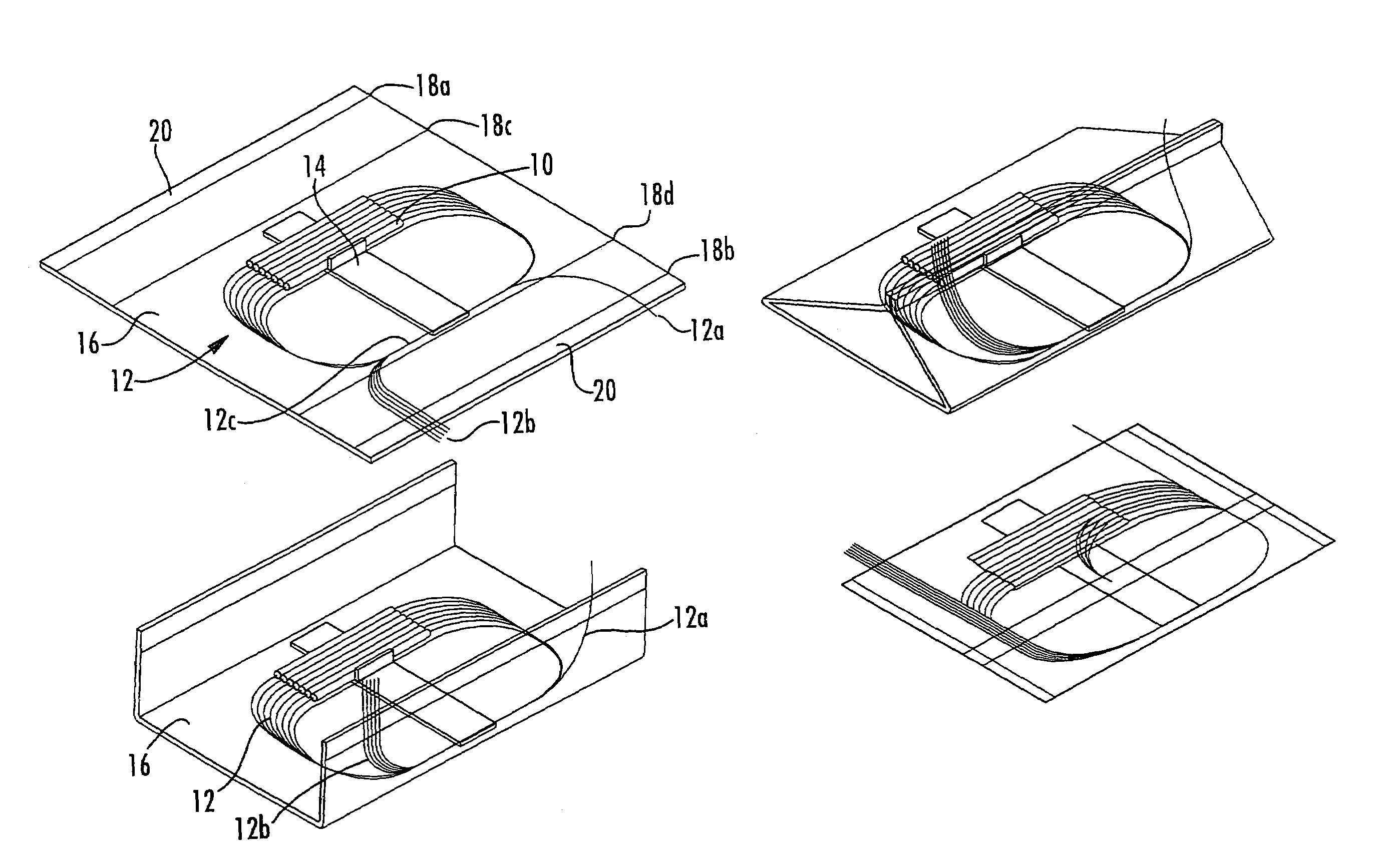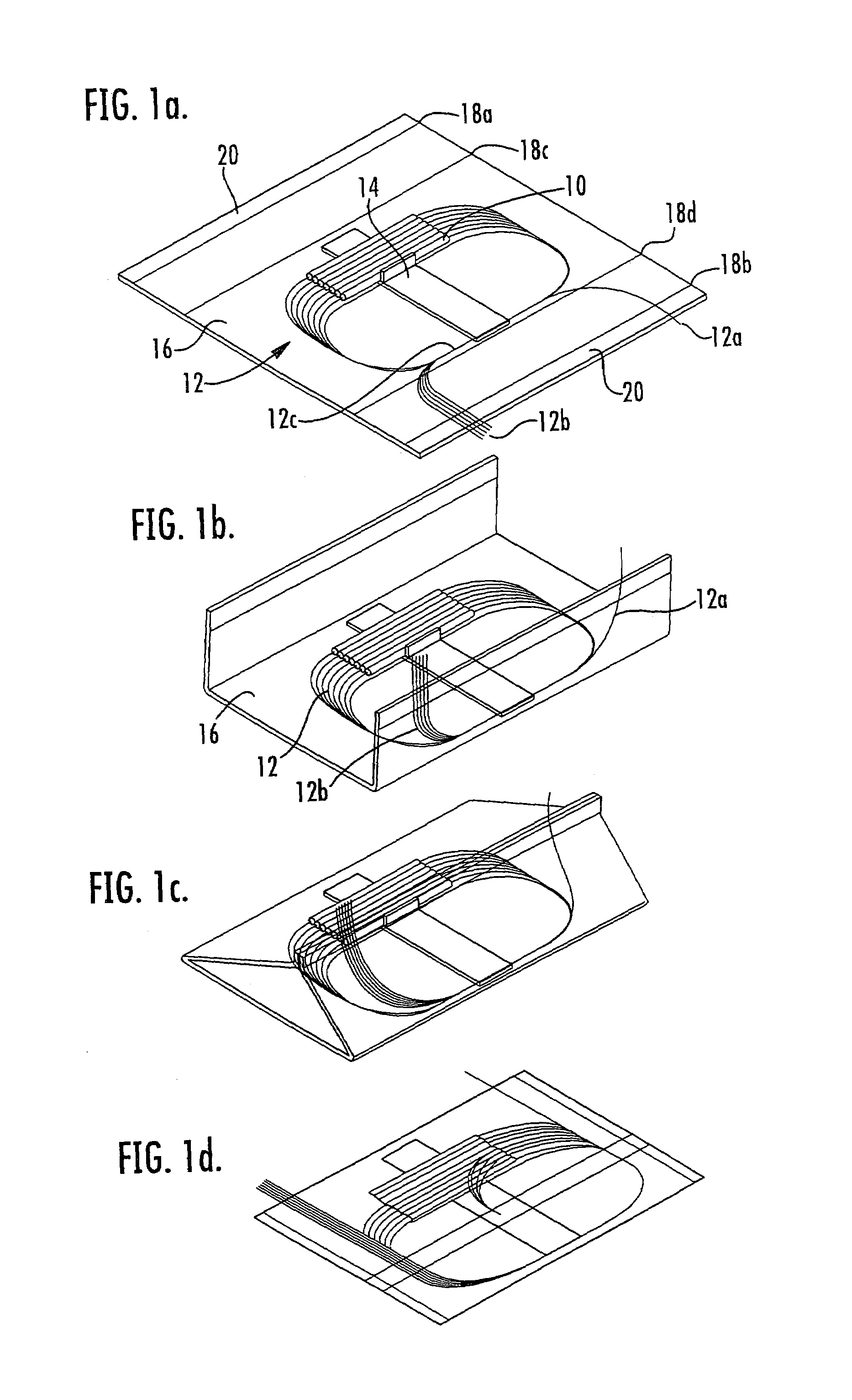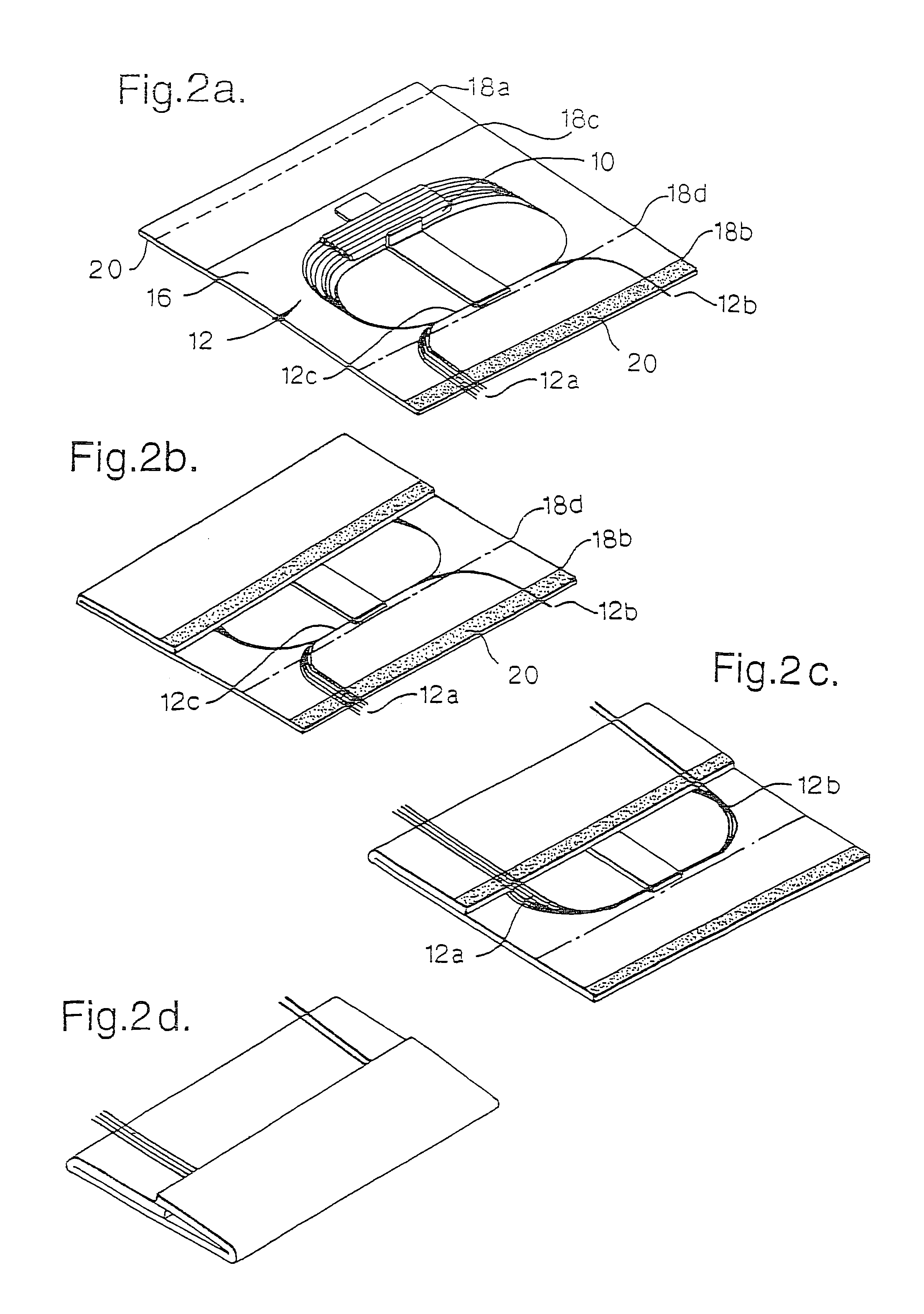Envelope for optical fibres
- Summary
- Abstract
- Description
- Claims
- Application Information
AI Technical Summary
Benefits of technology
Problems solved by technology
Method used
Image
Examples
Embodiment Construction
[0038]Referring to FIG. 1, a sealed enclosure for an optical component or components into which at least one optical fibre is fed is produced according to a first embodiment of the invention with reference to FIGS. 1a to 1d. In FIG. 1a an optical component comprising an array of splitters 10 and connected optical fibres 12 is mounted on a base plate support 14 with in-going fibres 12a and outgoing fibres 12b arranged in mirrored substantially S-shaped routes with straight sections 12c extending substantially parallel to the splitters 10 at the opposite end of the support 14. The arrangement of the optical component, fibres and support may be as described in the applicant's earlier GB patent application number 0129906.4. In FIG. 1a the optical component assembly is arranged on a flexible laminate sheet 16. The laminate sheet includes a moisture resistant barrier layer which is preferably made of aluminium. The laminate may be of the type used in Raychem's TDUX(™) products, as disclos...
PUM
 Login to View More
Login to View More Abstract
Description
Claims
Application Information
 Login to View More
Login to View More - R&D Engineer
- R&D Manager
- IP Professional
- Industry Leading Data Capabilities
- Powerful AI technology
- Patent DNA Extraction
Browse by: Latest US Patents, China's latest patents, Technical Efficacy Thesaurus, Application Domain, Technology Topic, Popular Technical Reports.
© 2024 PatSnap. All rights reserved.Legal|Privacy policy|Modern Slavery Act Transparency Statement|Sitemap|About US| Contact US: help@patsnap.com










